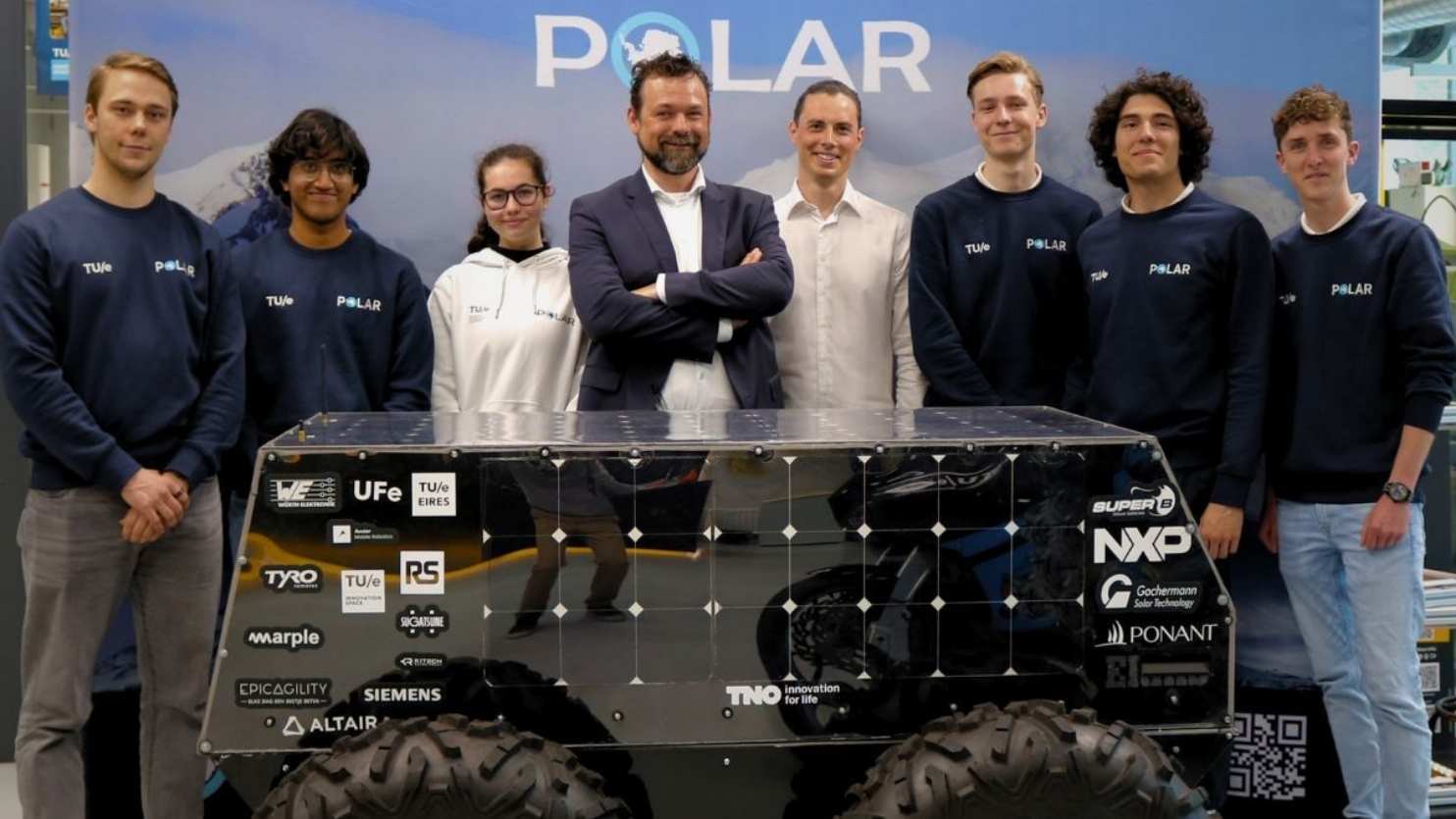
Team Polar & TNO: Road to Antarctica
Walking across ice fields in temperatures of -40 degrees Celsius with wind speeds of 185 km per hour. These are just two of the challenges of doing research in Antarctica. Team Polar, which consists of a group of students from Eindhoven University of Technology, is developing an autonomous vehicle to make research at the South Pole more sustainable, affordable and efficient. TNO is helping the team make their Ice Cube Research Rover. Follow its journey in a series of videos: Road to Antarctica.
Watch previous episodes
Team Polar in 2025
TNO supports the team by sharing knowlegde of technology and innovation, also in 2025. Find out what their next steps are in 2025 on the Road to Antarctica.
Episode 2: The Rover
Meet…The Rover. It will not drive without its power. But how low can the temperature go? Time to test the battery competence in a climate chamber at the Automotive Campus Helmond.
Episode 1: Testing solar panels in the snow
In the first episode, the student team takes us through every step of the adventurous journey to measure climate change in Antarctica. How do solar panels on the vehicle react to extreme conditions?

Follow Team Polar's adventures
Make sure you don't miss a second of the adventure by subscribing to our YouTube channel now.
Why Antarctica?
Climate change is threatening our future. To face this crisis head on, we need to understand how climate change works. This can only be achieved by doing research in unspoilt places like Antarctica and the North Pole. Unfortunately, current research is inefficient and expensive because of scientists’ reliance on large vehicles that run on kerosene. Also, 80% of Antarctica hasn’t been explored yet because of the dangerous terrain there.
Team Polar's Ice Cube will be able to help make research sustainable, affordable and autonomous.
The Rover will be solar-powered, which will reduce emissions and minimise the research footprint. The next prototype version of the Ice Cube will navigate autonomously, allowing researchers to collect data without entering the terrain in question.
Meet the team
Team Polar consists of 35 students and is supported by various partners and experts. Read more about the team on the Team Polar website.


‘It’s really a new field we’re exploring. The last people we know of that did this was NASA back in the 2000s.’
The Rover: an all-rounder
The Rover has to be an all-rounder. For example, it has to withstand the rugged terrain of the South Pole, drive and steer itself and generate and store its own energy.
This can only be achieved with advanced technology. Like solar panels that repel ice and snow and heated batteries that enable the Rover to make its way through the frozen landscape.

Pushing technological boundaries
The Rover’s success will depend on the students pushing the boundaries of existing technology.
TNO supports Team Polar by sharing its knowledge about a number of technologies, including:
- Autonomous driving
- Solar panels
- Batteries for cars
The students also have access to various labs and facilities, like climate chambers in which temperatures can be dropped down to well below zero.

‘As TNO, we’re not just standing on the sidelines. Our team of experts is helping Team Polar turn their wildest engineering dreams into reality.’
Team Polar unveils enhanced next-gen sustainable vehicle: Gentoo
In 2025 Team Polar consists of 42 motivated students from diverse backgrounds, representing 10 different academic majors and 14 nationalities. Over the past weeks Team Polar has been laying the groundwork for building the second sustainable, autonomous and affordable vehicle; Gentoo. Discover more >
